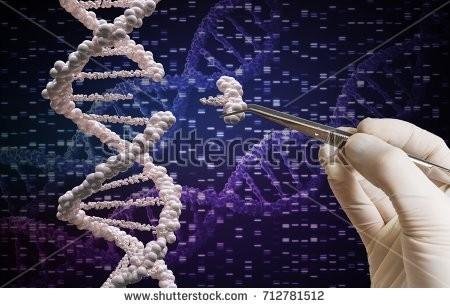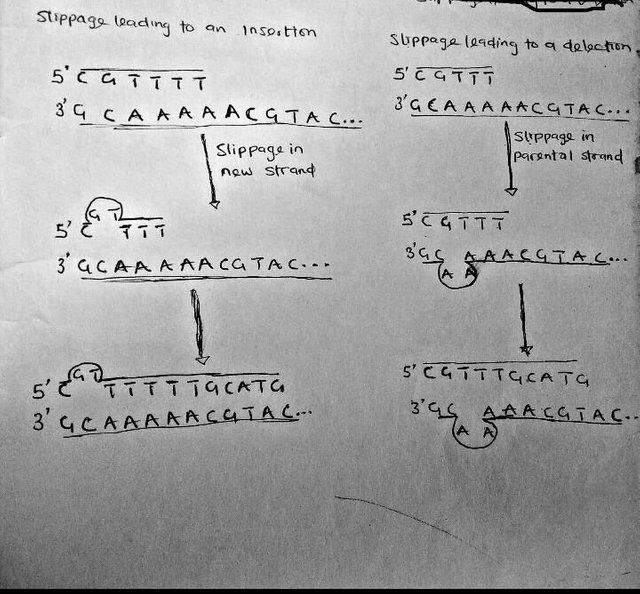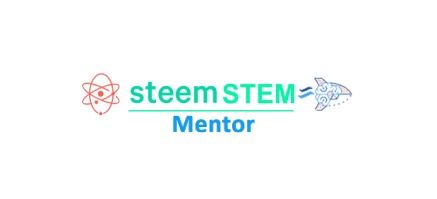MUTATIONS
It seems the most glaring way we can create genetic diversity is through mutations (Mutare in Latin, meaning " to change" ). Mutation is a case whereby permanent alteration is made to the nucleotide sequence of the genome of an organism. There are several types of mutation. Some arise as a result of alteration of single pairs of nucleotides and from the addition and subtraction of a nucleotide pair in the coding region of a gene. All these small changes in DNA are called point mutation because they affect only a single base pair in an exact location. Larger mutations are less common. These are insertions, deletions, inversions, duplications and translocation of nucleotide sequences.

Image Credit
Mutations can occur in one of the following two ways;
Spontaneous Mutation can occasionally arise in all cells and in the absence of any added agent and Induced Mutation are as a result of exposure to a chemical or physical agent usually termed Mutagen. Mutation are characterized according to either the kind of genotypic change that has occurred or their phenotypic consequences.
Spontaneous Mutations
These type of mutation occurs as a result of errors in DNA replication, lesions occurring spontaneously in DNA, or the action of mobile genetic elements such as transposons.
Replication errors occurs when nitrogenous base of a nucleotide shifts to a different form (Isomer) called a tautomeric form. Typically, nitrogenous bases exists in the keto form but are also in equilibrium with the rare enol and rarer imino forms. These shifts from one form to another alters the hydrogen-bonding characteristics of the base, thereby allowing purine for purine or pyrimidine for pyrimidine substitution which can eventually lead to a stable alteration of the nucleotide sequence. These substitutions are known as transition mutations and are the relatively common ones. On the other hand, mutation where a purine is substituted for pyrimidine and a pyrimidine is substituted for purine only happens on rare occasions due to the steric problem of pairing purines with purines and pyrimidine with pyrimidines.
Replication errors can also result from nucleotide deletion and insertion. These mutations normally occur where there is a short stretch of repeated nucleotides. In such a location, the pairing of template and new strand can be displaced by the distance of the repeated sequence, often resulting to insertion or deletion of bases in the new strand.
Spontaneous mutation can also evolve from lesions in DNA. For example, it is very possible for purine nucleotide to be depurinated; meaning to lose their base, resulting in the creation of Apurinic Site which does not base pair normally and a mutation may occur after the next round of replication. Likewise, just as purine is lost, pyrimidine can also be lost, thereby forming an Apyrimidinic Site. Other forms of lesions are initiated by reactive forms of oxygen and peroxides produced during aerobic metabolism. For example, Guanine can be converted to 8-oxo-7,8-dihydrodeoxyguanine, which often pair with adenine, instead of guanine during replication.

Induced Mutations
Mutagens can damage DNA, alter its chemistry or in some way interfere with its functions will possibly induce mutations. Mutagens can be comfortably classified according to their modes of actions. There are three(3) common types of chemical mutagens. They are; Base Analogues, DNA-modifying Agent and Intercalating Agents. A number of physical agents (e.g Ultraviolet Radiation) are mutagens that damage DNA.
Base Analogues are structurally similar to normal nitrogenous bases and can be incorporated into the growing poly-nucleotide chain during replication. Once in place, these compound generally exhibit base pairing properties different from the bases they substitute, and can eventually lead to a stable mutation. 5-bromouracil is the most widely used base analogue, an analog of thymine. It pass through a tautomeric shift from the normal keto form to an enol which is more frequent than normal base. These enol tautomers forms hydrogen bonds like cytosine, rather than adenine, it pairs with guanine. Other base analogues have a similar mechanism of action to that of 5-bromouracil.
Mutagens that change a base's structure and therefore alters its base-pairing degree of specificity are known as DNA-modifying Agents. There are so many of them. Some are selective; they preferentially react with certain bases and produce a certain kind of DNA damage. For instance, methyl-nitrosoguanidine is an alkylating agent that adds methyl group to guanine, causing it to pair with thymine. Hydroxylamine is also a type of DNA-modifying agents
Intercalating Agents distort DNA to induce single nucleotide pair insertions and deletions. These agents are planar and so, intercalate between the stacked bases of the helix. This results in a mutation, possibly from the formation of a loop in the DNA. Acridines such as proflavin and acridine orange are types of intercalating agents. Many mutagens, and many carcinogens damage bases severely, thereby impairing the hydrogen bonding between base pairs and the damaged DNA loses its ability to serve as template for replication.
| Mutagens | Effects on DNA structure |
|---|---|
| Chemical | |
| - | - |
| 5-bromouracil | Base analogue |
| 2-Aminopurine | Base analogue |
| Hydroxylamine | Hydroxylates cytosine |
| Nitrogen mustard | Alkylating agent |
| Proflavin | Intercalating agent |
| Acridine orange | Intercalating agent |
| Nitrous oxide | Deaminates bases |
| Physical | |
| - | - |
| UV light | Promotes pyrimidine dimer formation |
| X-rays | Causes base deletion, cross-linking. |
Effects Of Mutations
The effects of mutations can only be described at the protein level and in term of observed phenotypic changes. The effect is easily visible only if it produces a change in phenotypes. Commonly, the more conventional form of a gene and its associated phenotype is called the wild type. Mutation from this type to a mutant form is a forwarded mutation. The effect of a forward mutation can however be reversed by a second mutation that restores the wild type phenotype.
This is not the end of the topic as its other subtopics will be treated exclusively in my other posts.
The Second Image Was A Rough Sketch I Made To Explain Insertion And Deletion.
References
Mutation
Mutations effects
And if you are interested in reading my previous works;
Spontaneous Generation
RNA world
You used a copyrighted image. You can check the pinned images in the steemstem discord General chat channel where you can see what images you are meant to use or you contact a mentor.

@kingabesh, none of the picture is copyrighted. The first one was on pixabay and I drew the second myself
The first picture has a watermark and an obvious shutterstuck logo which depicts copyright. Shutterstock images are sometimes shown on pixabay but that doesn’t mean that they are free. This is why you need to contact a mentor on discord
Cheers !